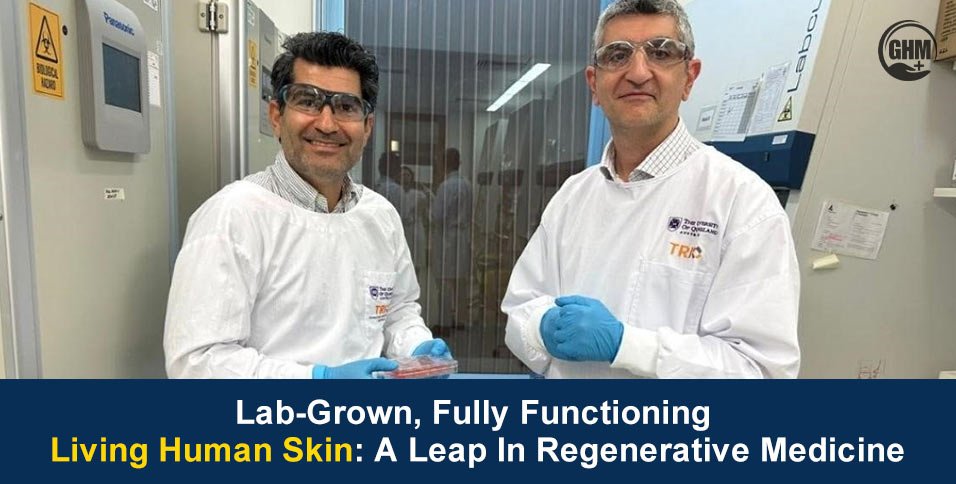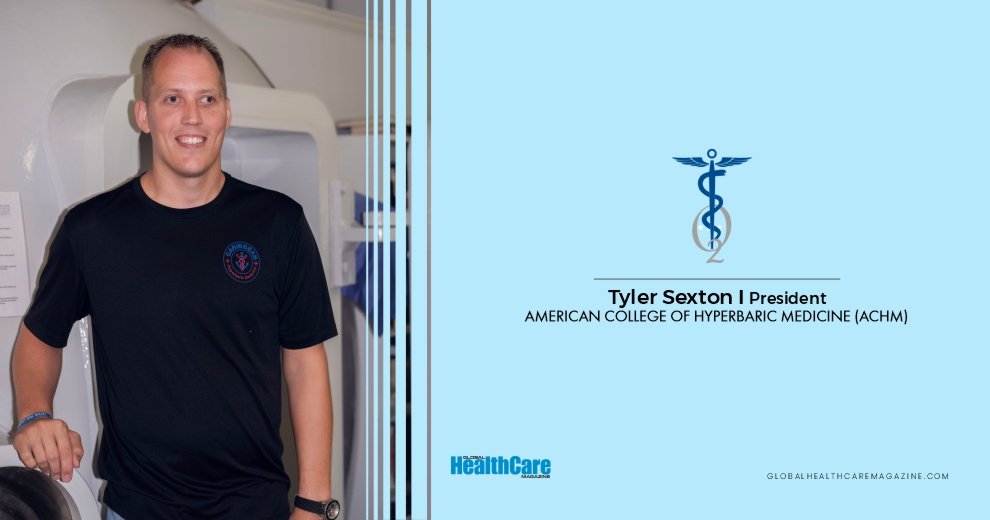Australian scientists have successfully grown world-first, fully functioning living human skin in a laboratory, complete with its own blood supply.
The breakthrough was announced on August 21, 2025, by researchers from the University of Queensland’s Frazer Institute, led by Dr. Abbas Shafiee, in collaboration with Metro North Health.
“Skin disorders can be difficult to treat, and it’s a real breakthrough to be able to provide hope for people living with chronic conditions,” he shared.
The findings were published in Advanced Healthcare Materials, a scientific journal known for highlighting cutting-edge research in tissue engineering.
Significance For the Human Body
The human skin is the body’s largest organ, which covers an average of two square meters in adults. It acts as a barrier against injury, infection, and environmental damage, while also regulating temperature and enabling sensations such as touch and pain.
Due to its complex structure, replicating skin in the lab has always been a major challenge. Existing artificial skin models lack blood vessels and other key features that keep skin alive and functional. Without a blood supply, lab-grown skin cannot receive nutrients or oxygen, making it impossible to completely mimic human biology.
Here, creating a skin organoid with its own vascular system has given scientists a tool that can replicate how real skin functions in the human body. It makes studying conditions like psoriasis, atopic dermatitis, and scleroderma possible under realistic conditions.
Past Attempts at Skin Substitution
- The idea of growing skin in a lab is very old. Scientists have been working on artificial skin for decades, with the earliest successes dating back to the 1970s.
- In the 1980s and 1990s, advances in bioengineering led to commercial skin substitutes such as Integra and Apligraf, still used today in some hospitals. These products combine layers of human or animal cells with scaffolds made from collagen or other materials.
- More recently, 3D bioprinting has been used to create skin models for cosmetic testing and medical research. However, without blood vessels and nerve cells, they could not fully represent how skin behaves in living humans.
- It marks the first time that scientists have built a skin model complex enough to include its own vascular network, along with structures for sensation and hair growth.
Living Human Skin Project
The research team developed the skin using advanced tissue engineering techniques. They grew 3D organoids, a simple version of human organs, in a controlled laboratory setting. These organoids were pushed into forming skin tissue that included all the necessary layers and components.
The key innovation was successfully adding blood vessels and capillaries. This required creating conditions in which cells naturally organized into a vascular system. Once the blood supply was established, the organoid could support more complex structures such as nerve endings and immune cells.
Metro North Health funded this project while skin was grown at Brisbane’s Translational Research Institute. The project took several years of trial and error, and the team stressed that it is still in the research phase. Clinical applications, such as direct grafting onto patients, remain some years away.
The Potential Impact on Medicine
The possibilities opened by this breakthrough are vast.
- Better Disease Research
With functioning blood vessels and immune cells, the new skin model can replicate disease conditions much more accurately than before. Scientists will be able to study inflammatory conditions like eczema or autoimmune skin diseases in ways that were not previously possible. Rare genetic conditions that affect the skin could also be explored in greater detail.
- Safer Drug Testing
Currently, many cosmetic and pharmaceutical companies test products on simplified skin models or animal tissues. Neither approach is perfect. The new lab-grown skin could provide a more reliable and ethical testing platform, reducing the need for animal studies while giving results that are closer to real human reactions.
- Advanced Skin Grafts
For people with severe burns or chronic wounds, skin grafts are often the only option. However, traditional grafts can fail to blend properly, leading to scarring or rejection. By using skin with its own vascular network, doctors may one day be able to transplant tissue that connects more naturally with the patient’s body, improving healing and recovery.
- Future of Regenerative Medicine
In the long term, this research could lead to even more advanced regenerative therapies. Scientists imagine a future where entire patches of living skin, complete with sweat glands and sensation, could be custom-grown for patients. This would represent a revolution in reconstructive surgery.
A Step Toward the Future
Despite the excitement, researchers caution that clinical use is yet to come. More work needs to be done to scale up production, ensure safety, and test the skin under medical conditions. Trials will be required before it can be used in patients.
Dr Shafiee has emphasized that the achievement is not just about transplants. It also creates a powerful research tool that will immediately benefit scientists studying skin biology and disease.
“This is the most life-like skin model ever developed,” he explained, “and it will change how we understand and treat skin conditions.”
Conclusion
The successful growth of living human skin with its own blood supply marks a turning point in regenerative medicine. It connects decades of past efforts with exciting new possibilities for the future.
As the lab-grown skin remains in research facilities of Brisbane, its impact will likely spread across the global medical community, inspiring further innovations in how we repair, replace, and understand the human body.
While it may be years before patients directly benefit, the breakthrough offers hope to millions worldwide.



















